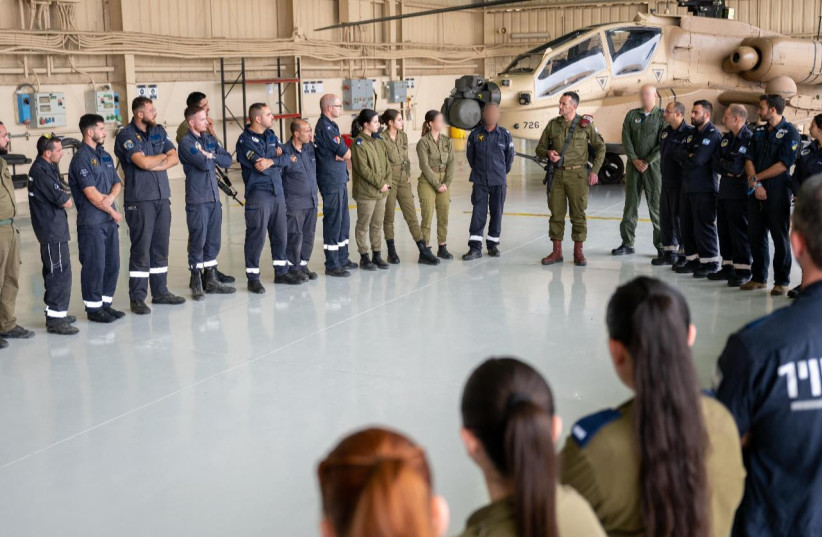With one small exception, the ceasefire between Israel and Hamas, with Hezbollah joining it, held from Friday morning through Saturday night at press time.
All sides observing the ceasefire meant that Hamas and Hezbollah fired no rockets or anti-tank missiles, and didn’t attempt to shoot into Israeli territory or at IDF soldiers – and the IDF did not attack Hamas.
The one exception was that while the IDF ceased surveillance of Hamas for six hours each day per the ceasefire deal, it continued drone surveillance of Hezbollah, leading the Lebanese terror group to fire a surface to air missile at an IDF drone on Saturday morning.

Hezbollah’s missile missed the drone and landed in Lebanese territory, causing no damage to Israel.
Likewise, the IDF fired an interceptor at the Hezbollah missile, but the interceptor did not hit it, with the IDF not explaining whether it had missed, or if it was fired merely for deterrence purposes or to be ready should the Hezbollah missile have made it into Israeli territory.
Also, IDF helicopters attacked and destroyed an unspecified position of Hezbollah, with no casualties listed.
Technicalities of the agreement
Technically, Israel and Hezbollah signed no ceasefire deal and the terror group just unilaterally committed to observing it, whereas Israel made no commitment not to attack Hezbollah – though until the group fired at the IDF drone, Israel had held its fire.
The IDF also sent a message late Saturday night that it had fired two interceptors at suspicious flying objects coming in from the Red Sea toward Eilat.
Next, the military said that it was unsure if these objects had actually been threats, or had been false alarms, saying it was reviewing the issue.
Yemen’s Houthis have fired ballistic missiles or sent drones against Eilat several times in recent weeks.
All missiles were shot down, as were all drones except for one that got through but caused no harm before it crashed into a school roof.
There have also been false alarms.
“We’ll return immediately t o attacking and invading Gaza once the ceasefire is over,” IDF Chief-of-Staff Lt.-Gen. Herzi Halevi on Saturday said.
“We took in the first group of women and children yesterday... This was a ceasefire which would not have happened without the pressure that the IDF applied” to Hamas, he said.
Further, Halevi said that continued military action will succeed in bringing back additional hostages beyond the 50 to 80 agreed to in this initial ceasefire.
The IDF chief also said that the military was using the “time off” to learn from its first six weeks of fighting Hamas how to improve its next round of fighting the terror group, after this initial truce ends.
On Friday, some unarmed Gazans attempted a few times to return from southern Gaza to northern Gaza, but were stopped by IDF forces using non-lethal riot dispersal methods. There were no reports of casualties on either side.
Defense Minister Yoav Gallant on Saturday said, “we will not leave Gaza until all of the hostages are returned. We will find opportunities to bring back more hostages, and every negotiation to release [hostages] will be with [Hamas] under fire” from the IDF.
Gallant and Halevi have been proponents of coercing Hamas to return hostages with a military invasion that is as aggressive as possible, including continuing to move IDF troops into southern Gaza.